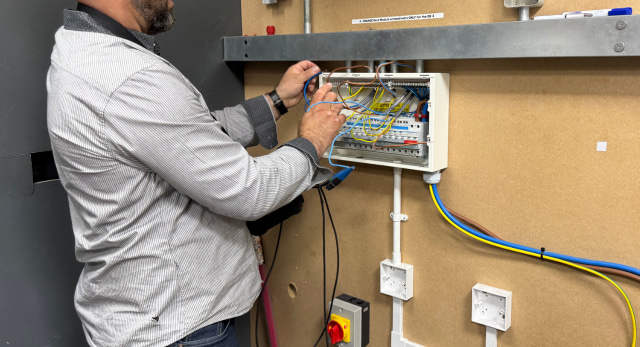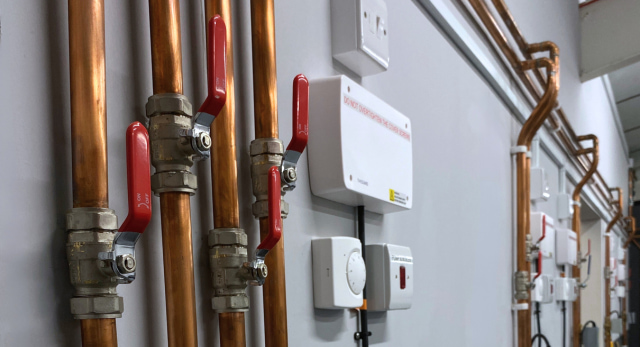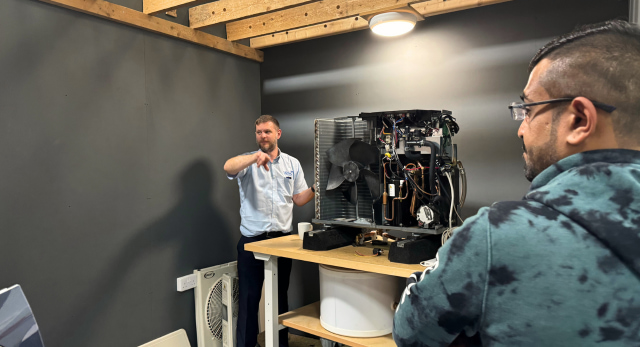If you’re wondering what colour the live wire is in the UK, here’s your answer up front: the live wire is brown. This brown wire is the one that carries electrical current from the power source to your sockets, switches, and appliances. It’s the wire you need to treat with respect because it’s the one that can give you a shock if you’re not careful. Alongside the brown live wire, you’ll find the blue neutral wire (which carries current away) and the green and yellow earth wire (which keeps you safe by channelling fault current to ground).
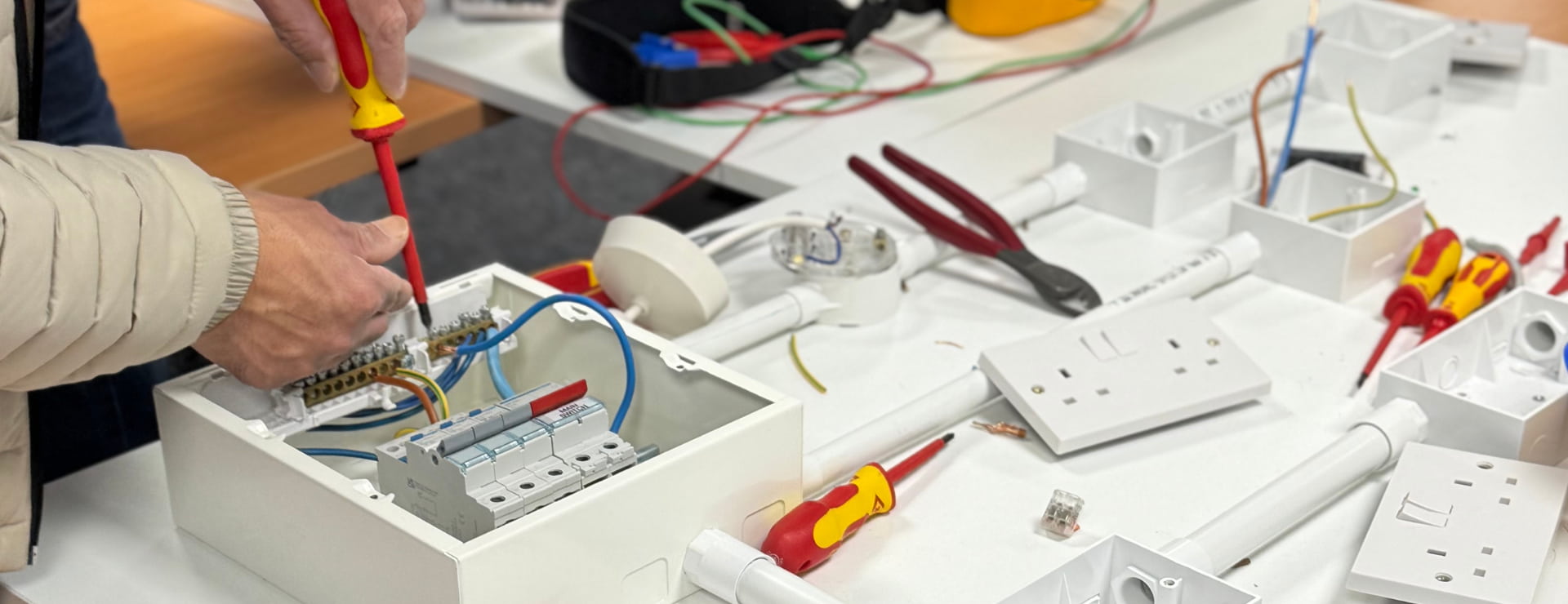 In this guide, we’ll break down everything you need to know about live wire colour, the full set of UK wiring colours, how the standards have changed over time, and why it all matters for safety, compliance, and fixed wire testing. Whether you’re a DIY enthusiast, a landlord, or a budding electrician, understanding wire colours is essential to keeping your property safe and up to code.
In this guide, we’ll break down everything you need to know about live wire colour, the full set of UK wiring colours, how the standards have changed over time, and why it all matters for safety, compliance, and fixed wire testing. Whether you’re a DIY enthusiast, a landlord, or a budding electrician, understanding wire colours is essential to keeping your property safe and up to code.
What Colour is the Live Wire in the UK?
Live wire colour (UK, post-2006): Brown
Neutral wire colour: Blue
Earth wire colour: Green and Yellow stripes
The brown wire is the one that carries current from the power source to your appliance or circuit. It’s the “hot” wire, or the one you absolutely don’t want to touch unless you’re sure it’s isolated. In three-phase systems, you’ll also see black and grey as live conductors, but for single-phase (most domestic wiring), brown’s your guy.
A Quick History: Old vs. New UK Wiring Colours
If you’re poking around in an older property or opening up an ancient fuse box, you might spot some different colours. Here’s a handy comparison:
| Function | Old UK Colour (pre-2004) | New UK Colour (post-2006) |
|---|---|---|
| Live | Red | Brown |
| Neutral | Black | Blue |
| Earth | Green (pre-1977), Green/Yellow | Green/Yellow |
Why did it change?
The UK harmonised its wiring colours with Europe in 2004 (mandatory from 2006) to reduce confusion, especially for electricians working across borders, and to improve safety.
Top tip: If you spot both old and new colours in your property, it’s a sign that your wiring has been partially updated. Always label mixed wiring at the consumer unit, and if in doubt, get a professional in.
The Importance of Getting Wire Colours Right
Let’s be blunt: mixing up your wires isn’t just a rookie mistake-it’s a fast track to electric shocks, fires, or worse. The colour coding is there for a reason:
- Live (Brown): Carries current to the appliance.
- Neutral (Blue): Completes the circuit, carrying current away.
- Earth (Green/Yellow): Safety wire, routes fault current safely to ground.
Incorrectly identifying or connecting wires can lead to:
- Electric shocks
- Equipment damage
- Increased fire risk
- Non-compliance with BS 7671 (the UK wiring regulations)
UK Wiring Colours in Three-Phase Systems
For those working with commercial or industrial setups, here’s how three-phase wiring colours line up:
| Phase | Old Colour | New Colour |
|---|---|---|
| L1 | Red | Brown |
| L2 | Yellow | Black |
| L3 | Blue | Grey |
| Neutral | Black | Blue |
| Earth | Green/Yellow | Green/Yellow |
Note: Three-phase systems are common in commercial buildings, workshops, and anywhere big kit needs serious power.
Fixed Wire Testing: Why Wire Colours Matter
If you’re responsible for a business, school, or any public premises, you’ll need regular fixed wire testing-also known as an Electrical Installation Condition Report (EICR). This isn’t just a box-ticking exercise; it’s a legal requirement under the Electricity at Work Regulations 1989.
What’s involved?
- Inspection and testing of all fixed electrical installations (not portable appliances)
- Checking for compliance with current wiring standards (including correct wire colours)
- Identification of deterioration, damage, or dangerous conditions
- Issuance of an EICR as evidence of compliance
How often?
- Industrial: Every 3 years
- Commercial/Offices: Every 5 years
- Wet environments (e.g., pools): Annually
Why does live wire colour matter for fixed wire testing?
Incorrect or mixed wiring colours can signal outdated or unsafe installations. It’s a key part of the inspection process, and any non-compliance will need to be rectified for a satisfactory report.
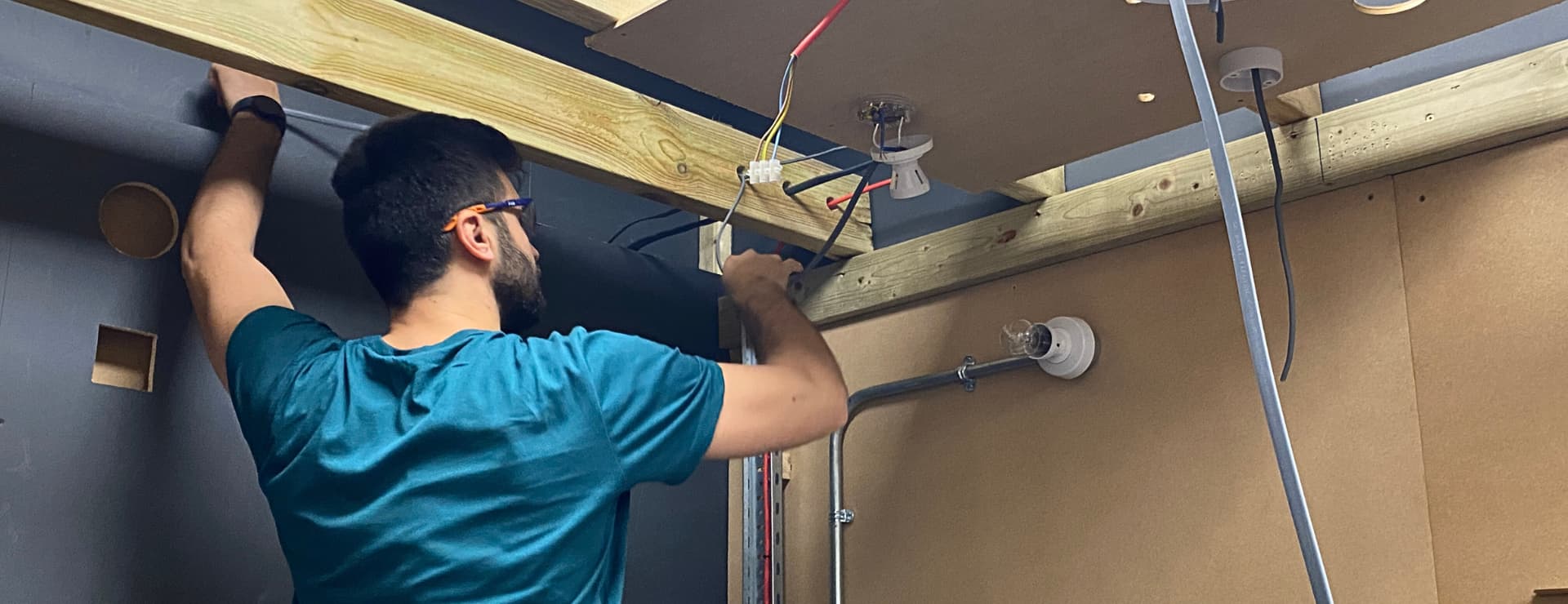
Why Did the UK Change Wire Colours?
The move to harmonise UK wiring colours with Europe was driven by:
- Safety: Reducing confusion for electricians working across borders
- Consistency: Aligning with IEC (International Electrotechnical Commission) standards
- Modernisation: Phasing out old, potentially dangerous wiring materials and colours
Bottom line: If you’re working on or inspecting wiring, always check which colour code is in use. If you’re unsure, consult a professional or take a Logic4training electrical course.
Spotting and Dealing with Mixed Wiring Colours
It’s not uncommon to find both old and new wiring colours in UK properties, especially those that have been partially rewired. Here’s what to do:
- Label everything: Mixed wiring must be clearly labelled at the consumer unit/fuse box.
- Test before touching: Never assume-always test wires before working on them.
- Consider a rewire: If you spot deteriorating old wiring, it may be time for a full upgrade.
- Book fixed wire testing: For businesses, this is essential for compliance and safety.
Safety First: Tips for Working with UK Wiring Colours
- Turn off the power: Always isolate the circuit at the consumer unit before starting work.
- Use the right tools: Insulated screwdrivers and voltage testers are a must.
- Double-check colours: Especially in older properties or where DIY work may have muddied the waters.
- Follow BS 7671: The 18th Edition Wiring Regulations are your bible.
- Get trained: Logic4training offers electrical courses for everyone from beginners to pros.\
Wiring Colours and Fixed Wire Testing: The Compliance Connection
- During a fixed wire test, inspectors will:
- Check all wiring colours for compliance with BS 7671
- Identify any non-standard or mixed wiring
- Recommend labelling or rewiring where necessary
A satisfactory EICR is your golden ticket to compliance with the Health and Safety at Work Act 1974 and the Electricity at Work Regulations 1989. Don’t risk it! Get your wiring checked and sorted.
Ready to Learn More or Get Certified?
If you’re considering a career in electrics, or just want to make sure you’re not living with a ticking time bomb behind your walls, check out our electrical training courses. From the 18th Edition to Pat P training, we’ve got you covered.
FAQ
What colour is the live wire in the UK?
The live wire is brown in all new UK installations (post-2006). In older homes, it may be red.
Why did the UK change its wiring colours?
To harmonise with European standards, reduce confusion, and improve safety. The changes became mandatory in 2006.
What happens if I mix up live and neutral wires?
Mixing up live and neutral wires can cause electric shocks, equipment damage, or fire. Always follow the correct colour codes and test before working.
How often should fixed wire testing be carried out?
Every 5 years for commercial premises, 3 years for industrial, and annually for wet environments like pools.
Where can I learn more about UK wiring regulations?
Check out Logic4training’s 18th Edition Wiring Regulations course or browse our blog for more electrical guides.
